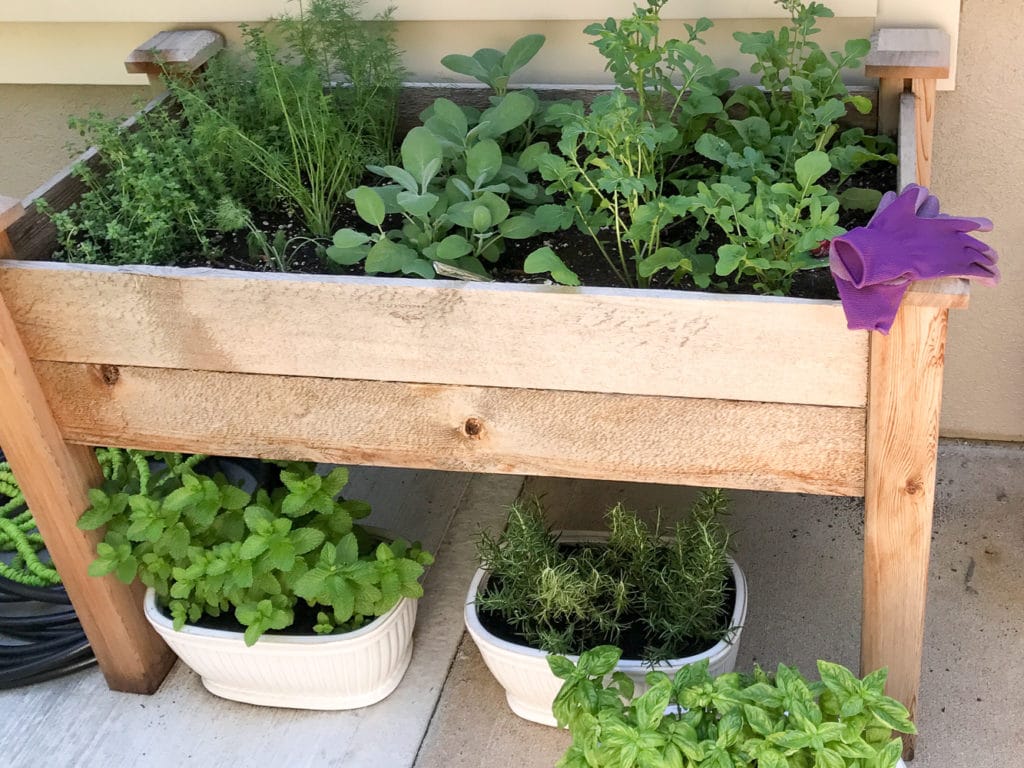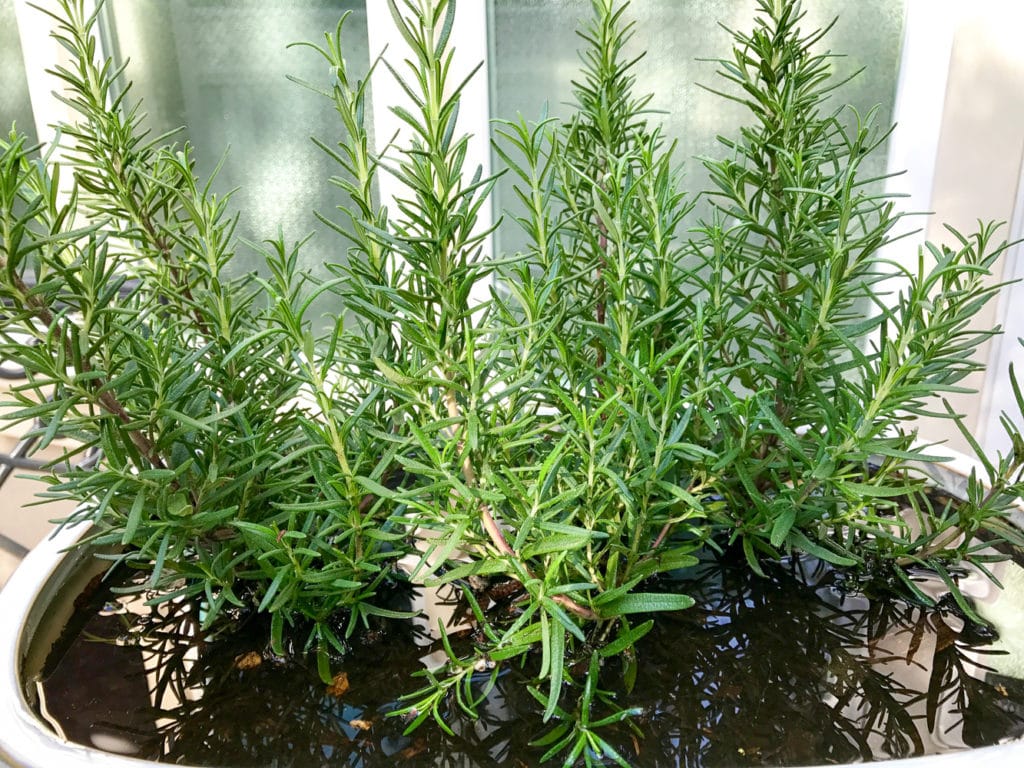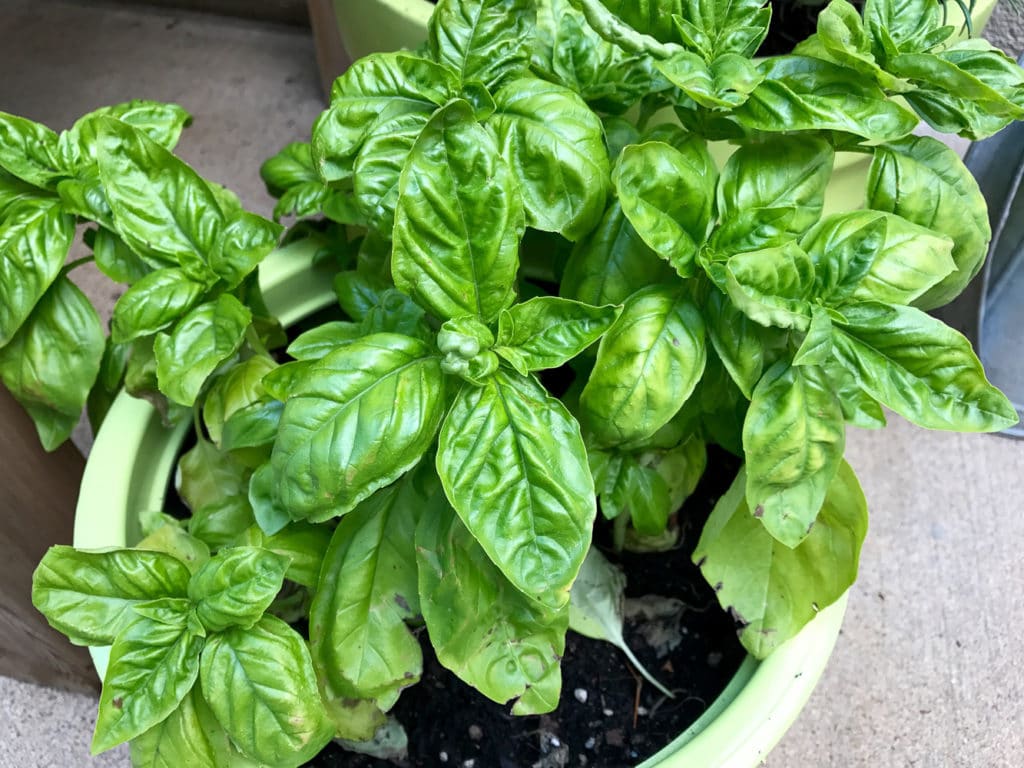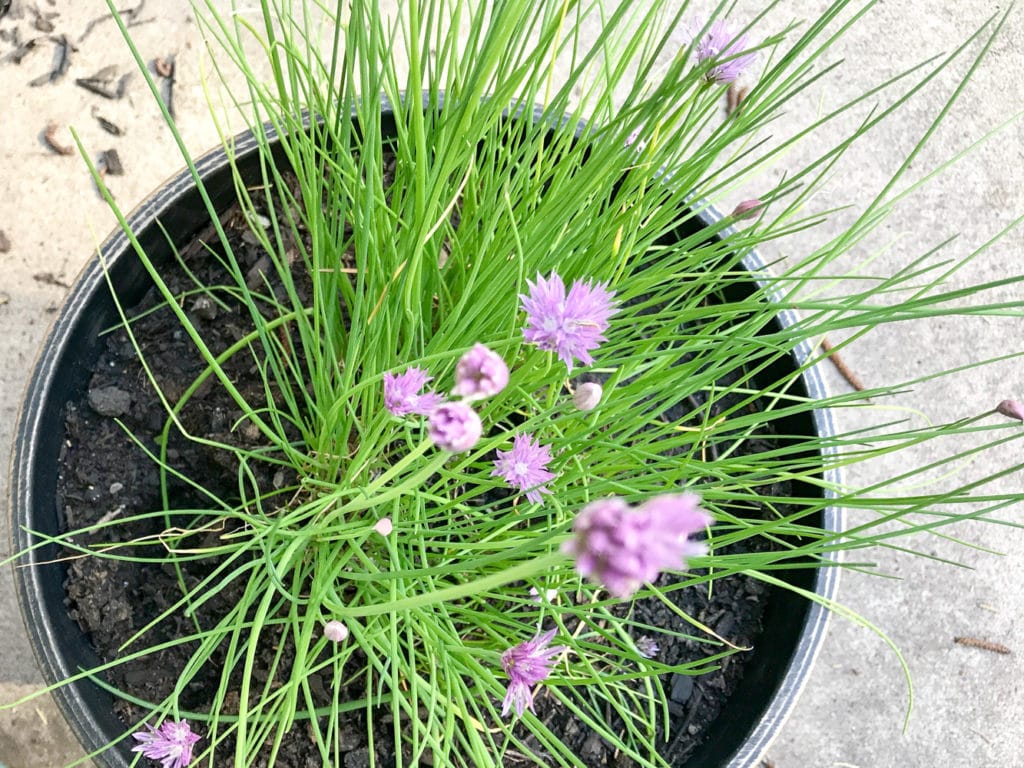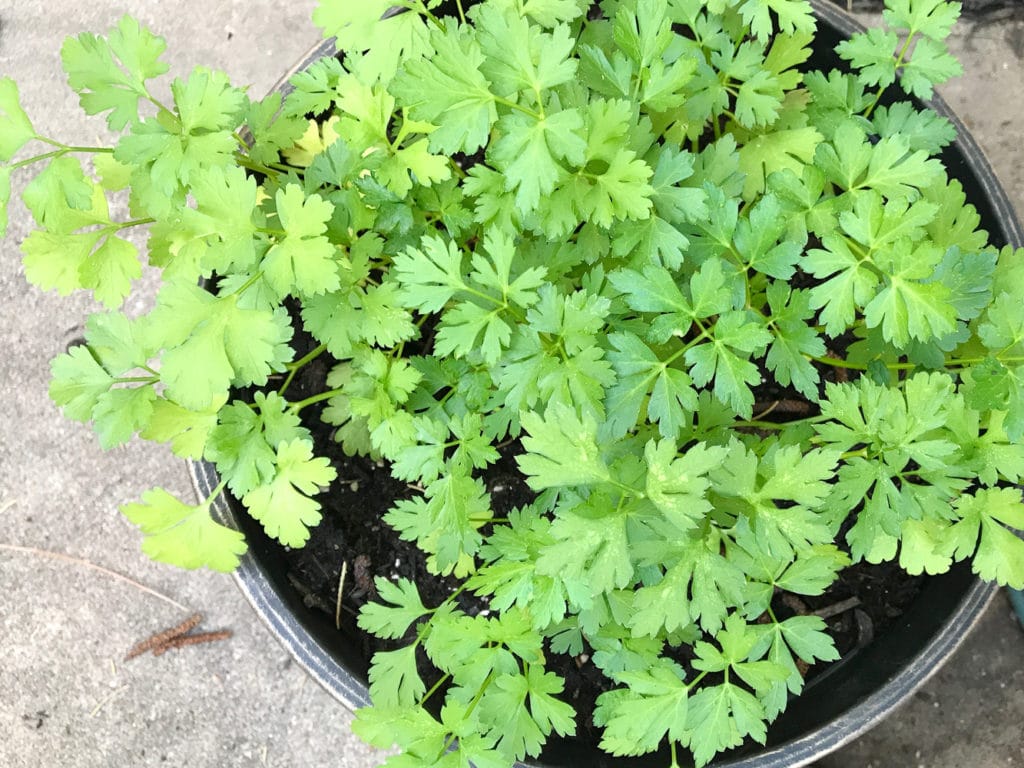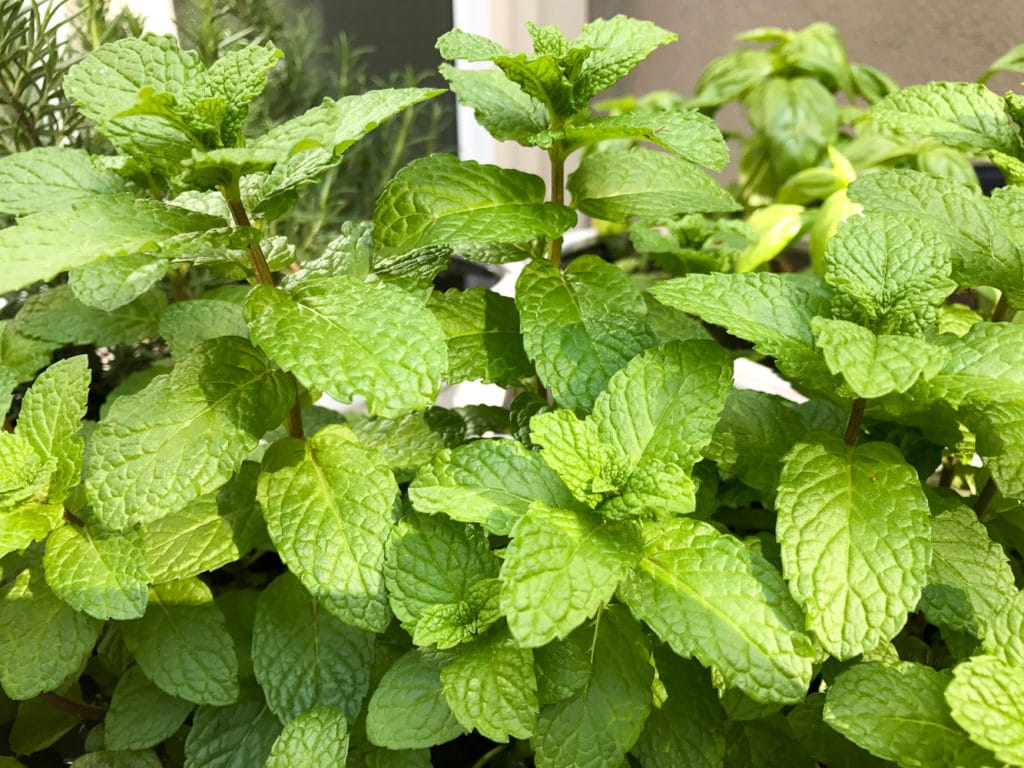I love having fresh herbs. They are so fragrant and they add huge flavor without adding salt or extra fat. Use these easy instructions to plant an outdoor herb garden in containers and enjoy fresh herbs all season long!
When to plant
Spring is my favorite time of year. After a long, cold, dreary winter in the midwest, I’m always anxious for sunshine and nice weather! Because I am guilty of planting too early and losing my beautiful plants to frost, I have started waiting until Mother’s Day weekend to plant my herb garden.
The soil
Be sure to find a sunny spot for your herb garden and use a potting mix rather than a potting soil. Potting mix is a lighter soil that is designed for the texture and drainage that herbs need. It also tends to be organic, which is a good thing since you will be eating the leaves of the plants.
The Secret to Success
The secret to a successful herb garden is knowing which herbs to plant together. Some herbs require more moisture than others. We recently moved and don’t have a place to plant my herb garden in the ground. So this year, my herbs will all be planted in containers or a raised bed. Because the raised bed is shallow and won’t hold in a lot of moisture, I planted herbs that require low moisture in the raised bed and I used deeper pots for the herbs that require more moisture.
Annuals vs Perennials
An annual is a plant that can’t survive the frost and needs to be planted each year. Perennials grow back on their own each year.
Low Moisture Herbs
In the raised bed, is thyme, dill, sage, and arugula (a peppery lettuce) as well. Other low moisture herbs include: bay, lavender, and oregano. The thyme is a perennial, however the dill and sage are annuals as well as the arugula.
Rosemary is also a low moisture herb, but I use so much rosemary that I dedicated an entire pot for it.
High Moisture Herbs
Basil is a high moisture annual herb.
Chives are also a high water herb. Chives are perennials and will come back each year…even in a container!
Parsley, which is an annual herb also requires a lot of water.
Finally, mint is a perennial that requires a lot of moisture. Mint is notorious for quickly taking over if planted in the ground. A container is always recommended to keep it from spreading too much. Mint is great for keeping insects and spiders away too.
How often should herbs be watered
Potting mix dries out quickly, so water the herbs frequently. Put your finger into the soil and if it’s dry one inch below the surface, it’s time to water.
Fertilizer
Because herbs require so much water, the nutrients can be depleted quickly. Be sure to fertilize about every 3 weeks, at half strength, with an organic fertilizer that does not encourage blooming. Flowers will sometimes change the flavor of the leaves.
With these few guidelines, you should be able to enjoy fresh herbs all summer long!
If you like this post, subscribe to Artzy Foodie to get all the latest tasty goodness straight to your inbox! For all of the latest updates, be sure to follow us on Facebook, Pinterest and Instagram!
